- Community & Alumni Engagement
- Mountain Heritage Center
- Heritage and History
- Diversity Through the Years
Diversity Through the Years
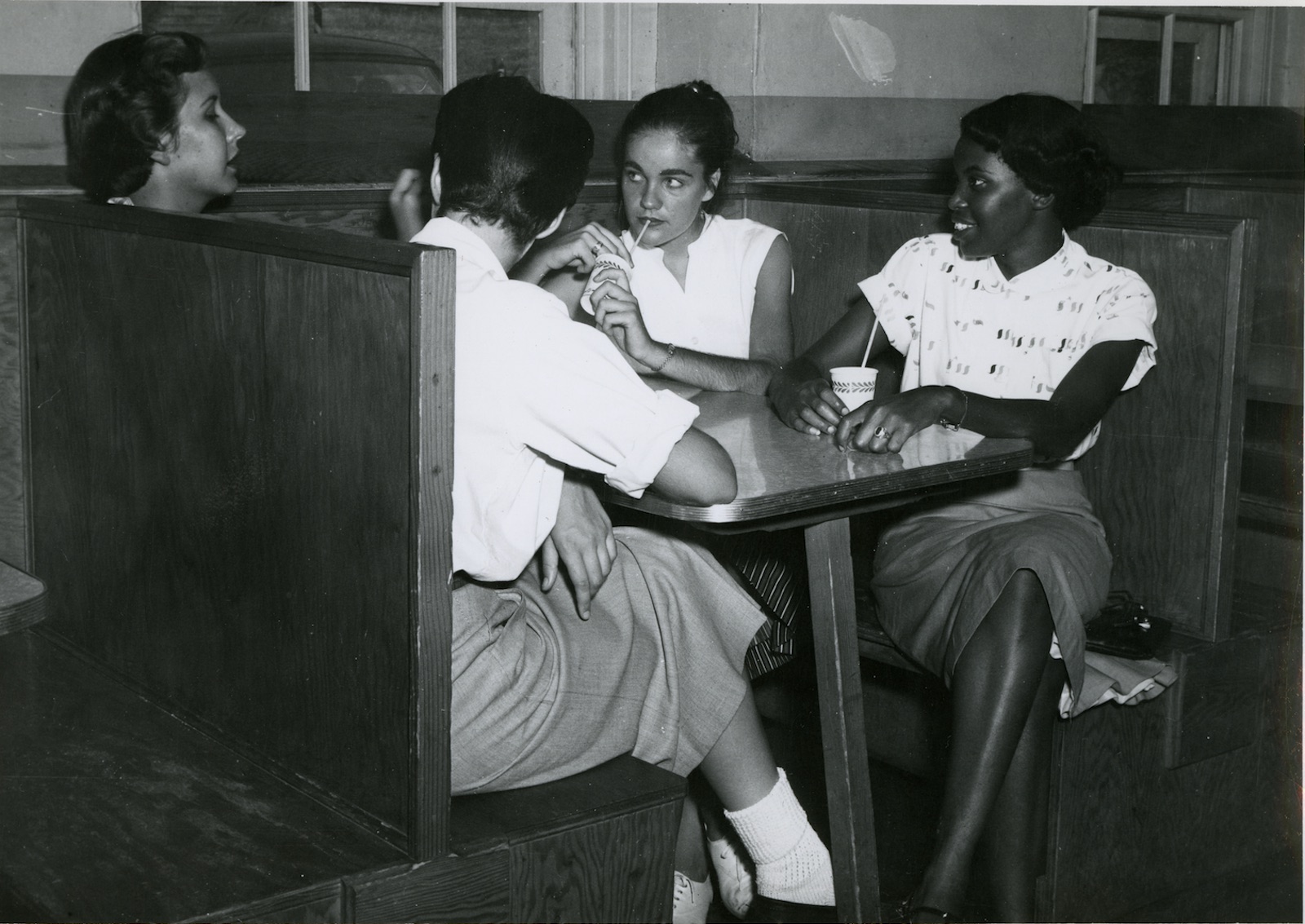
(Levern Hamlin with folk singer Hedy West (1957)
Western Carolina University has a deep and rich history that has affected many individuals throughout its long and illustrious career as an institute for higher learning. Diversity has been at the forefront of the University ever since the school opened as a coeducational institution. Higher education for women was a comparative rarity at the time. One highlight is Levern Allen Hamlin's enrollment in 1957, as she became the first African-American student at Western Carolina College. This ground-breaking moment allowed for future "firsts" such as the enrollment of Henry Logan and Rev. Dr. Keith Elliot, Sr. This exhibit’s goal is to recognize the individuals that helped shape, define, and exemplify the cultural makeup of WCU.
Western Carolina University has gone through many name changes throughout its life as an educational institution. Throughout this exhibit you will see references to Western Carolina Teachers College (1929-1953) and Western Carolina College (1953-1967).
Robert Joseph Gleason (Class of 2019)
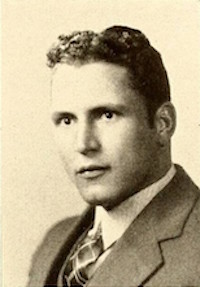
Oxendine in the 1938 Catamount Yearbook
Herbert Grantham Oxendine was born into extreme poverty in Buie, NC on November 7th, 1913.
A Lumbee native and the son of a tenant farmer, Herbert Oxendine faced many challenges at a young age. He was expected to stop public education after grade nine, and work on the farm with his father. Despite this, he continued to attend high school, graduating as salutatorian of his class. Oxendine continued his education journey with multiple stops along the way, including McKendrick College (IL), Pembroke State (NC), and our very own Western Carolina Teachers College.
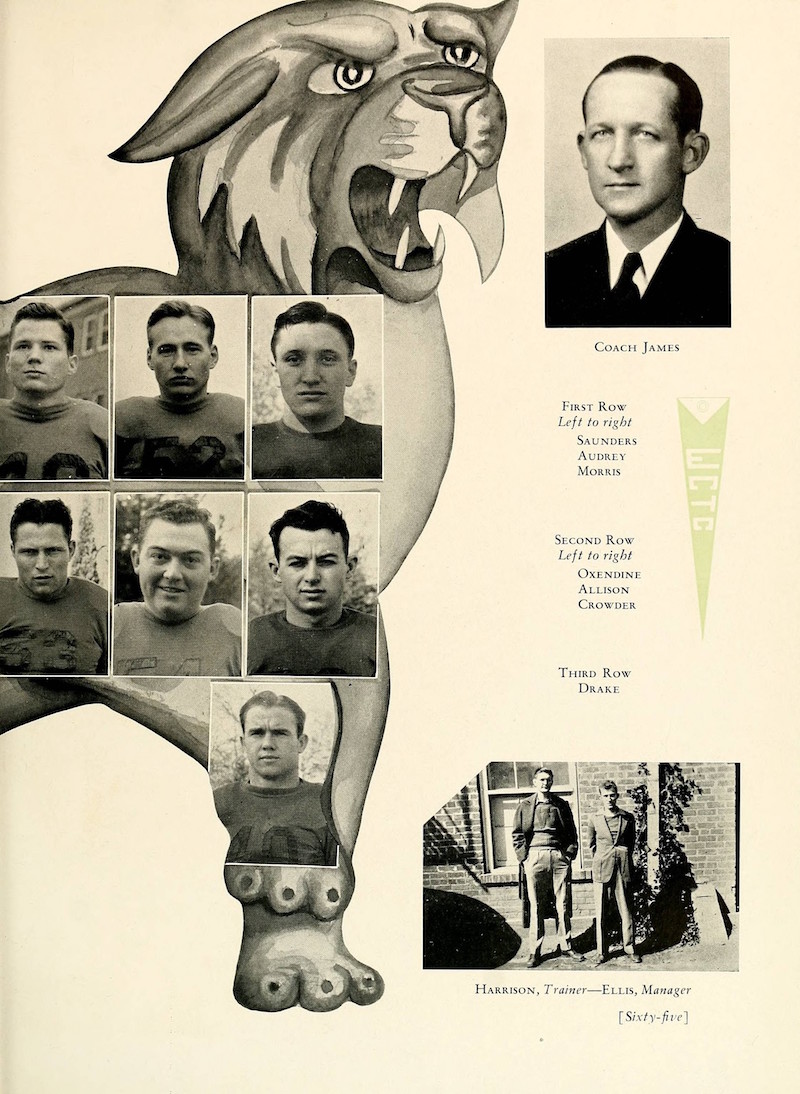
Herbert Oxendine with the Catamount Football Team (1938)
When Oxendine completed high school in 1934, he received a baseball scholarship to McKendrick College. He embarked for Illinois with only 85 cents in his pocket, and despite the scholarship, he was barely able to make ends meet. Because of this he returned to Pembroke State College for his sophomore and junior years. For his senior year he came to Western Carolina Teachers College, where he played varsity football and baseball, graduating with a B.S. in Mathematics and double minors in Science and English in 1938.
Not only did Oxendine defy all odds by completing his education, he was also a WWII war hero. After graduating from W.C.T.C. he taught for a year at the Fairmont School for Indians. However, in September of 1940, Oxendine joined the Army Air Corps along with Pembroke native and fellow Lumbee Walter Lowry. They are considered the first Native Americans in North Carolina to join the Army Air Corps. The day after the United States were attacked at Pearl Harbor, Oxendine was sent to the South Pacific to oversee the arming of fighter planes heading to the Pacific. After the war, he reached the rank of Major and was hailed as a war hero in his community.
After retiring from the military, Oxendine used the G.I. bill to attain his Ph.D. from Boston University. He received his Doctorate of Education, along with a Ed.M. in science education. His dissertation, according to the Robesonian, was teaching the nature of sound to children, a physical science experiment. After he had achieved his doctorate, Oxendine returned to Pembroke College and served in many official positions including the Chairman of the Education Department (1960), Dean of Faculty (1957-63), and the Summer School Director (1955-1963).
Herbert Grantham Oxendine’s legacy remains not only in spirit but in physical form. On the Campus of UNC Pembroke, the Oxendine Science building was named in his honor after its completion in 2004.
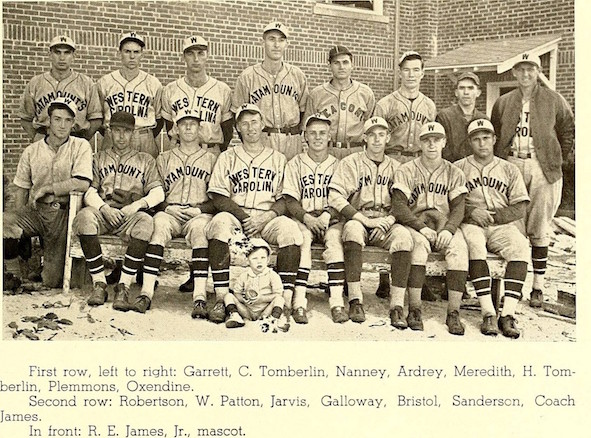
Herbert Oxendine with the Catamount Baseball Team (1938)
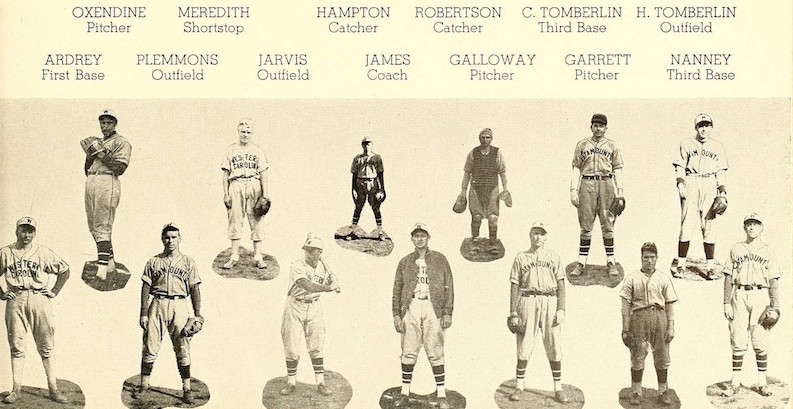
Oxendine posing for individual team photos
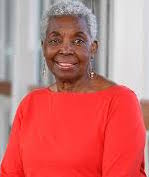
Levern Hamlin (2019)
Levern Hamlin Allen, an Honor graduate from Hampton Institute (now Hampton University), started her professional career as a speech pathologist in Charlotte, North Carolina. However, after arriving in Charlotte from Roanoke Virginia, she came to the realization that the requirements for teaching were different in North Carolina.
Hamlin found a specific certificate program at Western Carolina College in 1957. She applied to WCC because they provided what she needed and did not require a photo I.D. to apply.
“I feel like anyone in my situation would have done the same thing… it wasn’t planned, there was no organization behind me, I needed nine hours, so I went.”
Her journey began in Roanoke, Virginia from her parents’ house. She mapped out a route and set off to continue her professional career, but along the way would make history. She arrived late in the afternoon and drove up the hill to the now-gone Joyner Building. She was nervous, not because she was the only African American, but because of the hate that filled the country after the Brown vs. The Board of Education case three years prior.

Levern Hamlin sitting with Hedy West (1958)
Hamlin was helped along the way and credits her smooth transition to Lillian Hirt, WCC’s Director of Publicity. “She was very, very instrumental in making sure this was a success for Western…from where I stand, she was the person who made everything come together and click.”
In 1957 Levern Hamlin became the first African American to enroll at Western Carolina College. Her admittance to the University did not spark the type of resistance the world had seen in other colleges and Schools in the South.
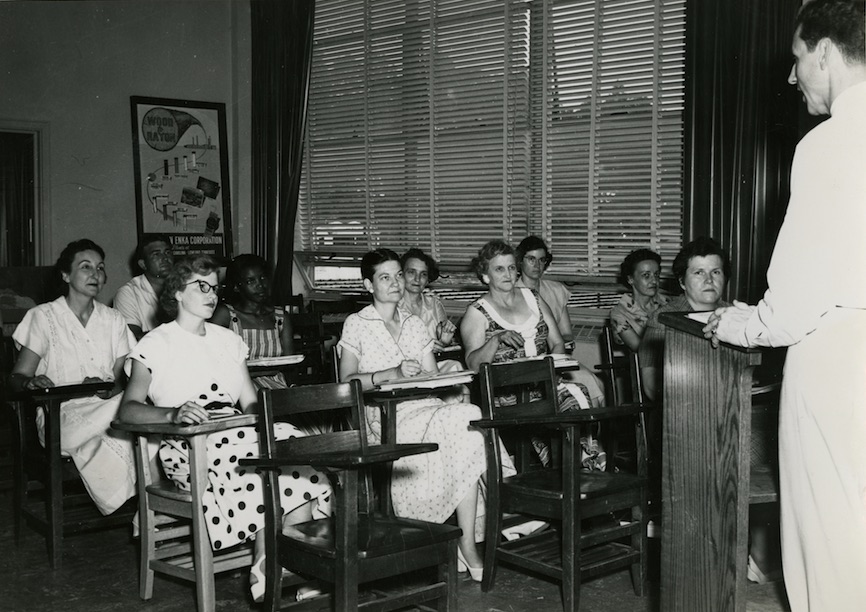
Hamlin sitting in class (1958)
Yet she was not only the first African American at Western, she was the first African American to be accepted into any state-supported school in North Carolina. “It was awkward to have all the attention, but I knew what the time was. That it was an awful time. And to show someone else, hopefully the world, that this can work, you can do this without the violence and the fighting, was meaningful to me. I didn’t mind doing it.”
After her time at Western came to an end, she earned master’s degrees from both the University of Maryland and George Washington University. She served for 25 years as a speech pathologist in the District of Columbia public schools. She also served as a member of the WCU Board of trustees from 1987 to 1995.
“Levern Hamlin Allen is one of the true pioneers of the desegregation of our nation’s public education system,”
(Quotes taken from Western Carolina University and the WCU Board of Trustees Minutes"
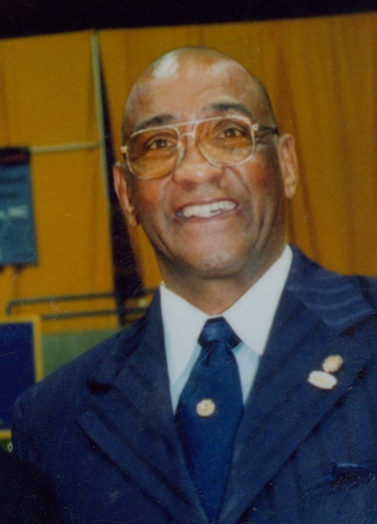
Henry Logan
Henry Lee Logan, born on March 14th, 1946 in Asheville NC, had no idea that he would be instrumental in challenging the status quo of a segregated society. As the first African-American collegiate athlete to play at a predominately white institution in the Southeast, he blazed a trail for integration while fighting a personal battle that ultimately shaped his life and his career.
Henry Logan excelled in basketball at the all-black Stephens-Lee High in Asheville, drawing packed houses at the school gymnasium. As a sophomore, Logan led his team to a state basketball championship, which resulted in a scholarship offer from Western Carolina University’s head basketball coach Jim Gudger. He also received offers from Duke, UCLA, Ohio State, and many other schools including historically black colleges and universities, but encouraged by his mother, Logan chose WCC. “My mother wanted me to burst the color barrier.”
However, after his high school career ended, Logan faced a whole new problem - he was illiterate. “Teachers just passed me along, and it got to the point where I believed that I didn’t have to study.” At the start of his college career, he wasn’t afraid of racial violence, he was afraid of his illiteracy being exposed. “I was really afraid someone would say something about me not being able to read and write.”
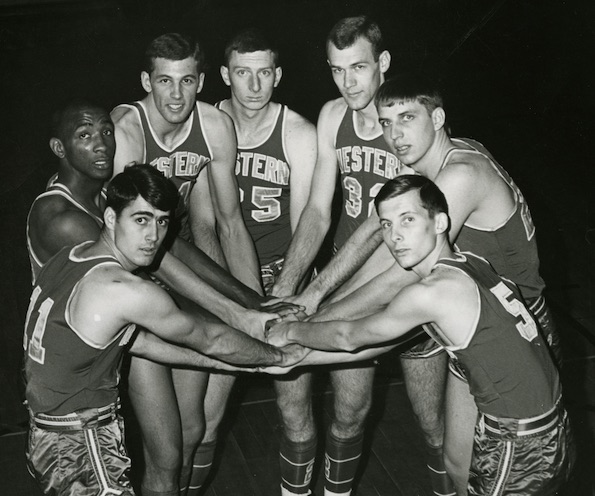
Henry Logan with Teammates
When he arrived on Campus he felt right at home because everyone was so nice. Logan’s transition from Stephens-Lee to Western Carolina College was smooth due to his teammates accepting him and even protecting him when opposing teams harassed and gave him trouble. “Every time they called me a name I would try and score a lot of points… and when we would go back, they wouldn’t say nothing.”
Though he was supported by the team, his fellow classmates, and the University, he was being shielded from reality, though with the best of intentions.
His time at Western was made easier by the recruiting of fellow Stephens-Lee teammate Herb Moore “I guess they figured if there was two of us, we’d have a better chance at surviving…I think we were helpful in bringing white and black communities together.” Even with all the support from the University and his fellow peers, Logan still battled with the loneliness and lack of fellow African Americans at the University that he could interact with.
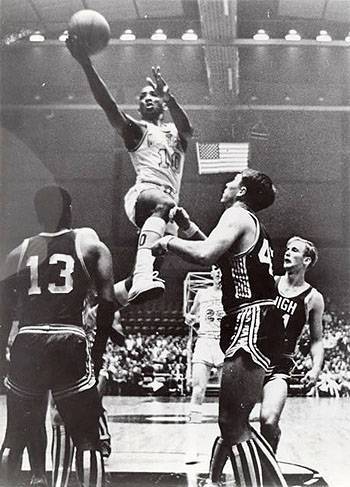
"The Jump" Henry Logan showing his natural ability to jump
“I went back to my room one day and cried like a baby…I was lonely.” Battling through the loneliness and personal pressures Logan was able to have an incredible career at Western Carolina College. While attending Western he established four major point records:
Most Field Goal Attempts (33) (1/6/67)
Most Assists (22) (12/4/67)
Best Scoring Average (36.2) (1/6/67)
Most Points Scored (60) (1/6/67)
Logan brought sellout crowds to Western; people would come from all over to watch him play. Because of the massive crowds, Reid gymnasium had to be remodeled. Games were often televised locally due to the spectacle Logan performed on the court. In addition to his career with Western, Logan wowed the world as a four-time All American at the 1967 Pan American Games when the US team won the Gold Medal.
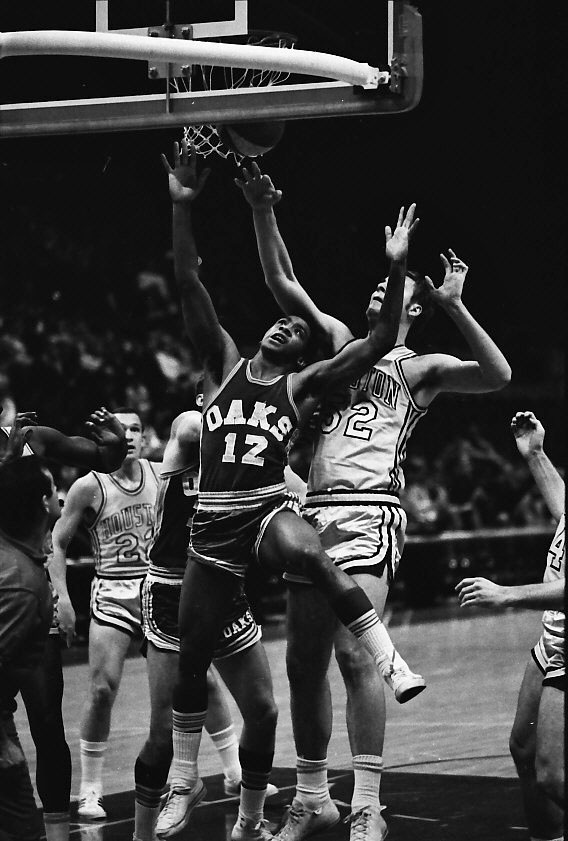
"Henry Logan playing for the Oakland Oaks of the ABA
In 1968, the professional basketball circuit came calling in two forms, the National Basketball Association (NBA) and the American Basketball Association (ABA), which was a league created to rival the NBA’s monopoly on professional basketball. He was drafted by two different teams, the Seattle Supersonics of the NBA and Oakland Oaks of the ABA. He opted to play for the Oakland Oaks after receiving one of the most lucrative rookie contracts in professional basketball. With the Oakland Oaks, he won an ABA championship in 1969, the height of his professional career.
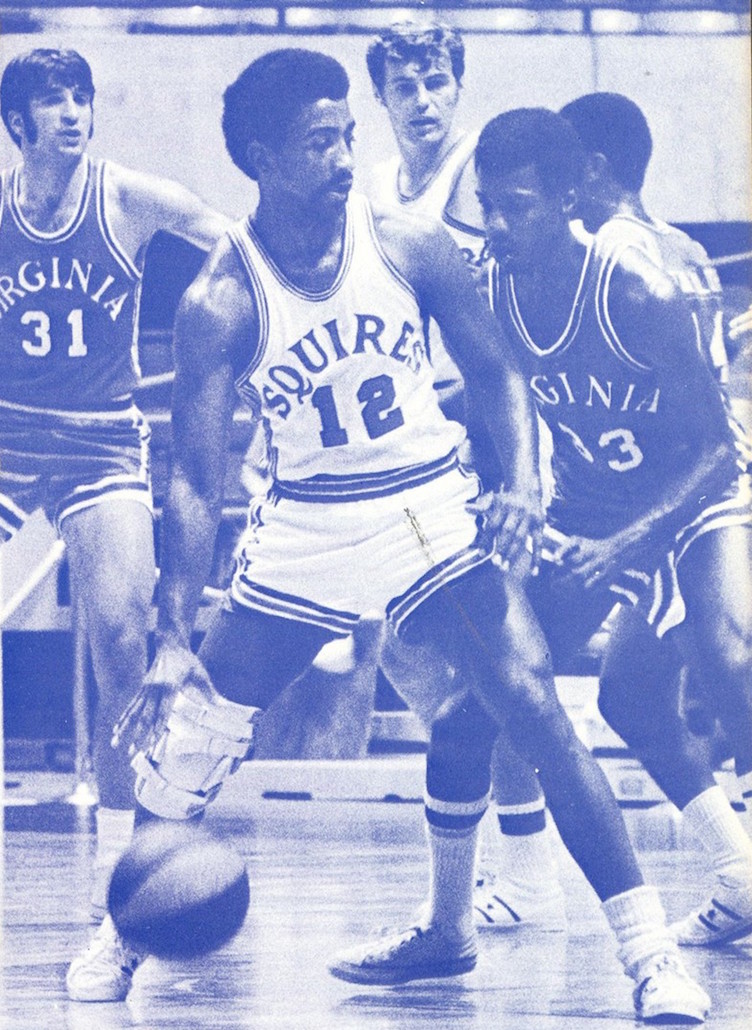
Henry Logan playing for the Virginia Squires of the ABA
From 1968 until 1970 Logan played for three ABA teams, the Oakland Oaks, Washington Caps, and the Virginia Squires. His career was cut catastrophically short due to recurring knee injuries and excessive drinking, a fallout due to his injuries. After his career was over, Logan found comfort in alcohol and drugs and unfortunately ended up going to jail. But he found recovery and comfort through the Bible and Christianity, and through these means became literate.
Henry Logan passed away in 2023 in Asheville where he had been working as an inspirational speaker. He was inducted into the North Carolina Sports Hall of Fame in 2000.
“As the first African American basketball player to be recruited by and play for a predominantly white institution in the southeast, Henry Logan helped to open the door of opportunity for other African American student athletes, both at Western Carolina and many other institutions.”
“Henry Logan brought national attention to the university and created among students, alumni and fans an enduring spirit and loyalty to Western Carolina.”
(Quotes taken from The Undefeated and The WCU Board of Trustees Minutes)
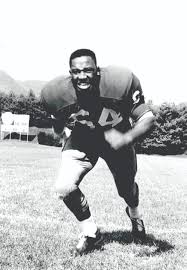
Keith Elliot (1972)
Rev. Dr. Keith Elliot, Sr. was the first African American to receive a football scholarship at a predominantly white institution.
“Elliot was the first football scholarship signee in the State of North Carolina and at Western Carolina College in 1965 during a time of racial unrest in the U.S."
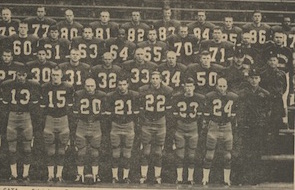
Keith Elliot (#64) with the Catamount Football Team (1965).
Keith Elliot was a three-year starter at Western Carolina College and captured many accolades during his tenure in Cullowhee. He was selected to the 1966 All Carolina Conference, and was invited to play in the 1968 Shrine Bowl, an All-Star game for Seniors put on by the Shriners, a fraternal group since 1925.
Not only did Keith Elliot accomplish many feats on the field, he also accomplished many in the classroom and professional setting. He was the first African American to receive a BA in Business Administration at WCU.
After his time as an undergraduate he returned to receive his masters in 1973 and served as a Graduate Assistant Coach at Western Carolina University.
Elliot is also a Veteran of the U.S. Army and earned a master’s in ministry in 1989 and then went onto earn his Doctor of Ministry in 2003. Currently, Rev. Dr. Keith Elliot, Sr is the Pastor of Sentertown Missionary Baptist Church in Tennessee and is involved heavily in his local community.
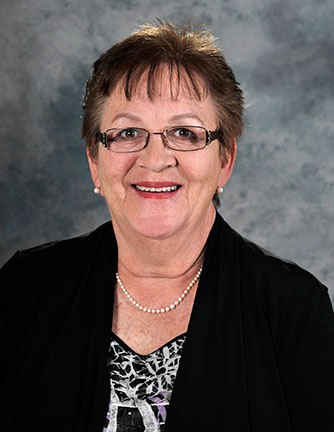
Joyce Conseen Dugan
Joyce Conseen Dugan, born August 25th, 1948 in Cherokee NC, has played a pivotal part in the educational success and prosperity of the Eastern Band of Cherokee Indians (EBCI). In addition to dedicating a large part of her life to the pursuit of education, she was also the first female Principal Chief of the Eastern Band and oversaw the development of Harrah’s Cherokee Casino and its economic success for the community.
She began her career as a teacher’s assistant in the Cherokee Central School system and continued to work while obtaining her bachelor’s degree from Western Carolina University. Once this was achieved in 1974, she was employed as a full-time
teacher. Dugan received her Master’s in Education in 1981 and eventually became the Director of Federal Programs. In 1990 she was appointed Superintendent of Cherokee Central Schools, a post she held for five years.
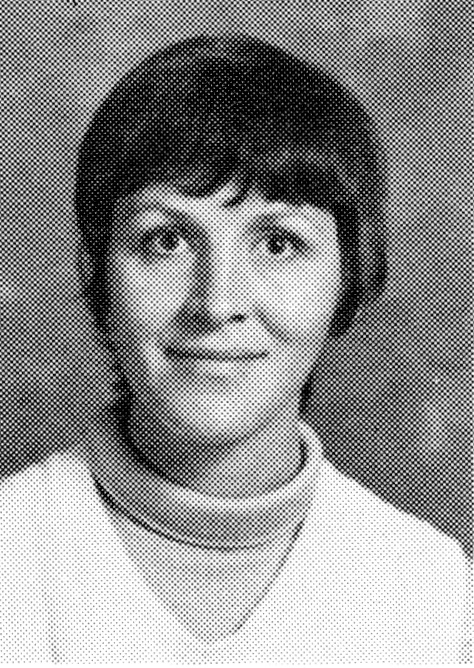
Joyce Dugan in the 1974 Catamount Yearbook
In 1995, Ms. Dugan ran for and won the position of Principal Chief of the EBCI, becoming the first and to date the only female principal chief in EBCI history. As principal chief, she worked for broad inclusion in government; sought to revitalize Cherokee culture; promoted protection of the environment; advocated responsible gaming laws; and promoted improved health standards for the Cherokee with special emphasis on diabetes. She served in this position for four years, and during this term she also reacquired land in which the Cherokee mother town Kituwah was located.
After her tenure as Principal Chief ended in 1999, she was employed by the Casino to develop a program to prepare members of the Eastern Band for senior management position. She then went onto become the Casino’s Director of Public, Government, and Community Relations. Ms. Dugan returned to the Cherokee School system in 2009, where she served until her retirement in 2011.
Dugan’s achievements were not limited to her roles in the Cherokee education system, government, and casino enterprise; she has also received numerous awards and honors. In 1997, Dugan received the Distinguished Alumni Award from Western Carolina University and was placed on the Honor Roll of Peak Performers from the College of Education and Allied Professions later that year. In 2006 she was awarded an Honorary Doctorate degree from the University of North Carolina in Chapel Hill for her efforts towards cultural preservation.
Dugan currently serves on a plethora of boards including the Cherokee Indian Hospital Governing Board, the Development Foundation Board of Directors, the North Carolina Center for the Advancement of Teaching, and the Mainspring Board of Directors.
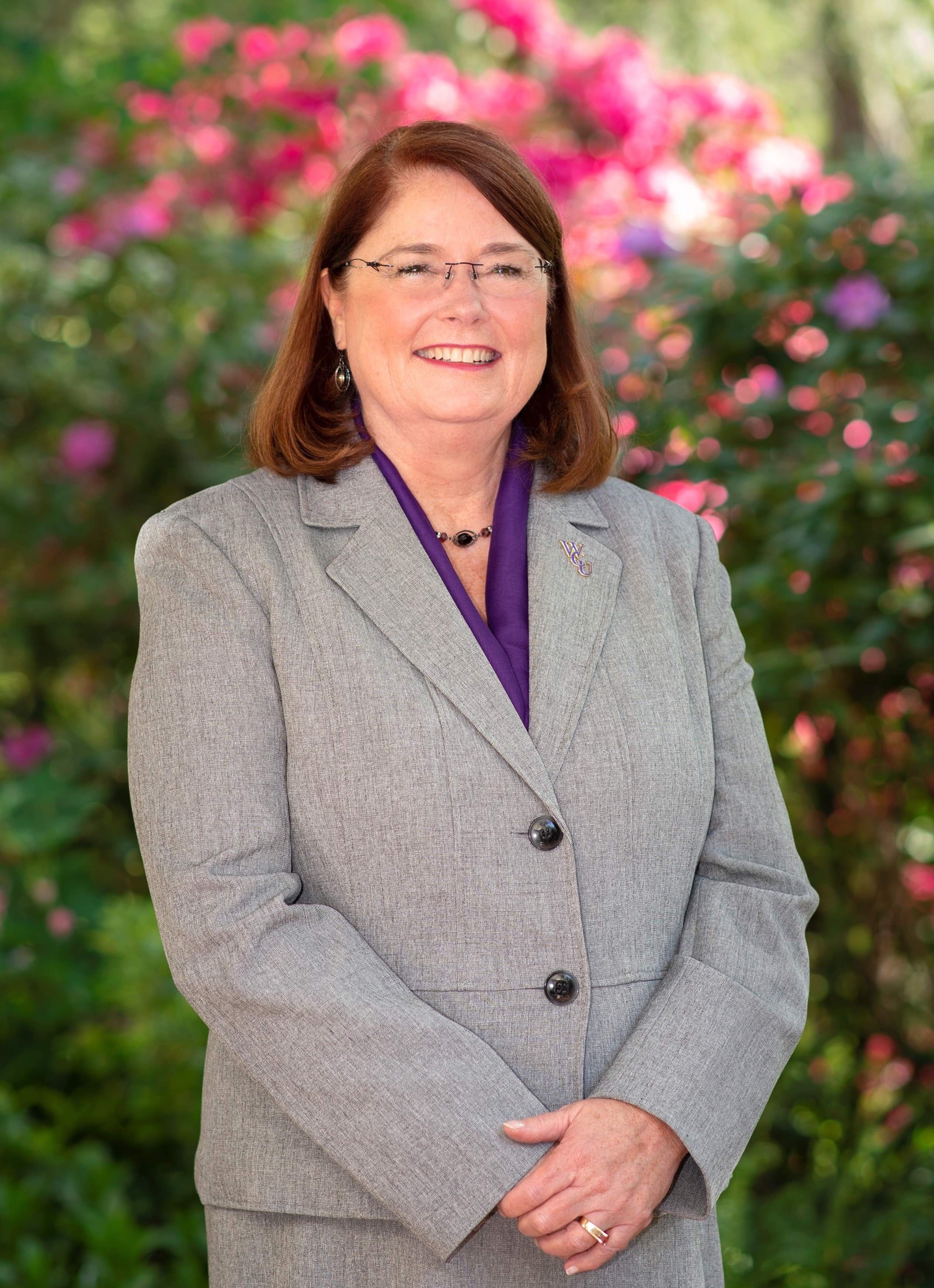
Dr. Kelli R. Brown
Dr. Kelli R. Brown assumed her official duties as WCU’s first permanent female Chancellor on July 1, 2019. Dr. Brown stated, “Being selected as the 12th chancellor of this incredible university is the opportunity of a lifetime. I am impressed by the university’s passionate focus on student success and its ongoing commitment to access while also delivering the absolute best quality education. I am inspired by WCU’s efforts to prepare students for life through experiential education and career preparation – especially students from the western region that this university was founded to serve.”